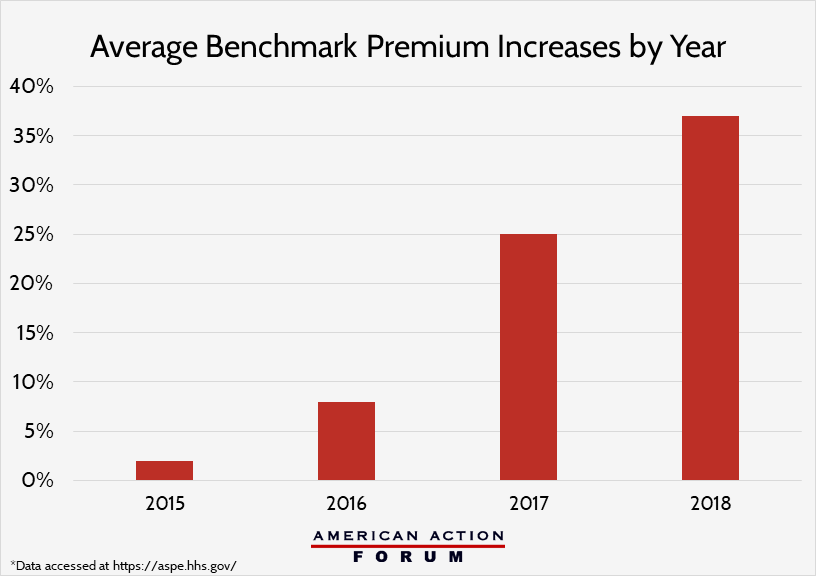Weekly Checkup
May 11, 2018
How to Reduce the Deficit and Lower Health Premiums
Once again rising health insurance premiums are in the news. Plan sponsors are beginning to submit their rate requests for the 2019 Affordable Care Act (ACA) Marketplace, and double-digit increases are once again the defining attribute of the requests. In Maryland, the two insurers with a combined four plans in the state’s ACA marketplace are requesting an average increase of 30 percent over 2018 premiums. In Virginia, the rate requests we’ve seen so far are all over the map. Some plans are proposing to lower their rates slightly, but most are seeking steep increases of between 15 and 66 percent. It’s quickly becoming apparent that 2019 will bring more of the same when it comes to rapidly rising health care costs in the ACA’s marketplaces.
Many factors drive premium calculations, and Congress can only effect some of those directly. Ironically, however, there is one policy action Congress could take immediately to provide premium relief in 2019. Unfortunately, as I’ve written about previously, neither Republicans nor Democrats seem willing to push to fund cost-sharing reduction (CSR) payments to insurers at this point. Still, in light of the recent news on premium trend lines, perhaps it’s worth noting a new analysis from the Center for Health and Economy (H&E) on the effects of CSR payments paired with a reinsurance program.
H&E finds that resuming CSR payments in 2019, paired with a federal reinsurance program to cover the costs of the most expensive plan beneficiaries, would reduce insurance premiums in the individual market. Silver plans, which have born the brunt of the recent increases, would see reductions of between 15 to 16 percent relative to the H&E baseline projection for 2019. Over the 10-year window H&E finds these policies could lead to roughly a million more insured individuals than under current law. Most impressively, the two policies combined would result in a net deficit reduction of $17 billion over 10 years. In other words, Congress could easily provide premium relief, increase the number of insured Americans, and reduce the federal deficit starting as soon as next year.
Chart Review
Jonathan Keisling, Health Care Policy Analyst
If the proposed health insurance premiums seen to date are approved for the 2019 plan year, they would build on the substantial premium increases from previous years in the Affordable Care Act exchanges. The chart below shows the average increase in benchmark premiums for each year of the ACA exchanges.
From Team Health
The Impact of Raising the Threshold for Medicare Part D Catastrophic Coverage
Deputy Director of Health Care Policy Tara O’Neill Hayes breaks down how lowering the Medicare Part D catastrophic coverage threshold impacts different stakeholders.
Worth a Look
Business Insider: A 23andMe competitor just launched its own cancer testing initiative — but it differs in a key way
Axios: AI predicted a patient’s odds of dying with 90% accuracy
Health Affairs: Evaluating The Impact Of The Orphan Drug Act’s Seven-Year Market Exclusivity Period











